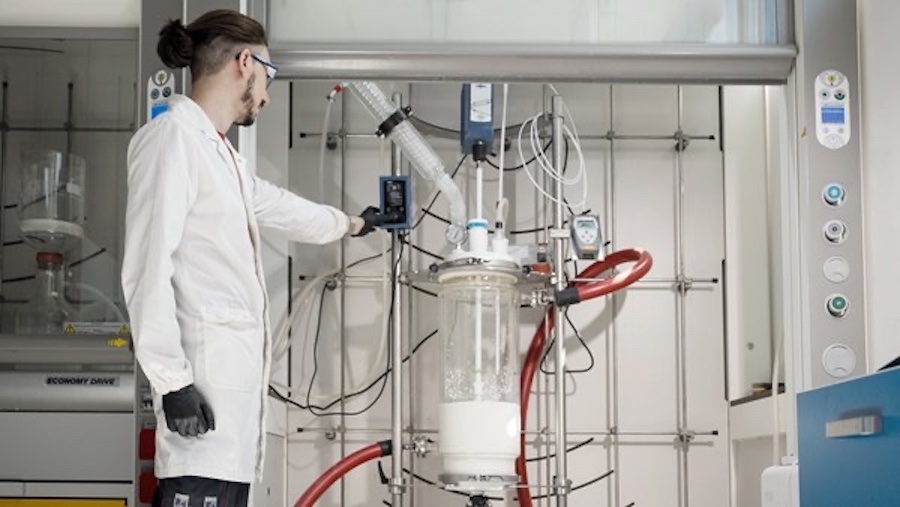#Recycling / Circular Economy
Project findings unveil a USD 1.5 billion opportunity for sorting fibre-to-fibre recycling in the US
UNDERSTANDING THE U.S. TEXTILE WASTE LANDSCAP
The United States is a global leader in textile consumption and waste generation, positioning itself as one of the largest sources of secondary raw materials for post-consumer textile feedstock. Despite this, only 15% of the textile waste generated in the US is currently recovered, with 85% ending up in landfills or incinerators.
With the impending policies in the European Union and certain American states, alongside commitments from both public and private sectors to promote fibre-to-fibre recycling, there is a growing demand for infrastructure related to post-consumer textile collection, sorting, and recycling.
The Sorting for Circularity USA Project addresses a key challenge in the textile industry: transforming textile waste into a valuable resource. This project investigates the connection between consumer behaviour, waste generation, and available recycling technologies. The goal is to establish a system where all textiles are utilised effectively, minimising waste. — Katrin Ley, Managing Director, Fashion for Good
ADDRESSING DATA GAPS
In the pursuit of establishing a functional reverse supply chain and the necessary infrastructure, two critical areas lack data – consumer disposal behaviour, and material characteristics of post-consumer textiles. The Sorting for Circularity USA project addressed these gaps through a comprehensive national consumer survey and waste composition analysis.
The survey revealed that 60% of respondents divert textiles, while 4% discard them, driven primarily by factors such as condition and fit. On the other hand, the waste composition analysis unveiled that over 56% of post-consumer textiles are suitable for fibre-to-fibre recycling, with cotton and polyester being the most prevalent fibre types, indicating a substantial potential for these textiles to be used as feedstock for mechanical and chemical recycling processes.
“This research provides defensible insight into two parts of the recovery value chain with little to no existing data: firstly, how consumers decide what to do with textiles they no longer want and secondly, the fibre composition of postconsumer textiles. With these new findings, we can enhance collection systems to capture more textiles, calculate the financial potential for textile recycling, and build supportive, data-driven policy. We are eager to continue building upon this research to advance further opportunities for textile circularity." — Marisa Adler, RRS
CHARTING THE PATH TO A CIRCULAR TEXTILES FUTURE
The project revealed a $1.5 billion opportunity for fibre-to-fibre recycling by redirecting non-rewearable textiles from landfills and incinerators to recycling streams. ??The report outlines growth strategies for the US textile recycling industry, emphasising enhanced financial value through efficiency improvements, increased commodity valuation, and policy mechanisms like extended producer responsibility schemes. Collaboration among stakeholders is crucial, including brands, government, retailers, consumers, collectors, sorters, recyclers, and financial institutions, to promote circularity, invest in research and development, and advocate for supportive policies and incentives to drive technological innovation. This redirection of textiles towards recycling underscores the substantial economic potential of embracing circularity in the textile industry.
There is an opportunity to build on these insights and assess the feasibility of different sorting business models and (semi) automated sorting technologies to create a demo facility suitable for closed-loop textile recycling. Ultimately, evaluating the commercial and technical feasibility of a semi-automated sorting process and identifying investment opportunities to scale solutions nationwide.
ABOUT SORTING FOR CIRCULARITY
Launched in January 2023 by Fashion for Good and RRS, the Sorting for Circularity USA Project is a pioneering initiative, the first of its kind in the United States, aimed at providing crucial insights for strategic decision-making to advance circularity in the fashion value chain.
The project brings together Fashion for Good brand partners adidas, Inditex, Target, Levi Strauss & Co., external partners H&M Group, lululemon, Eastman, Nordstrom, and the New York State Center for Sustainable Materials Management (NYS CSMM), and key project implementation partners including the Secondary Materials and Recycled Textiles (SMART) Association, Goodwill Industries International, Helpsy, Goodwill of Colorado, Goodwill of the Finger Lakes, Goodwill of the San Francisco Bay, Goodwill Suncoast, and United Southern Waste.
The Sorting for Circularity framework, introduced by Fashion for Good together with Circle Economy in 2021, forms the basis for the project, utilising Matoha’s Near Infrared (NIR) technology to assess textile waste composition and identify the potential for fibre-to-fibre recycling.
READ THE FULL REPORT:
https://reports.fashionforgood.com/wp-content/uploads/2024/05/2024-FFG-RRS-Sorting-for-Circularity-USA-Report.pdf?mc_cid=1db7e65572&mc_eid=a5acfc3b0e














